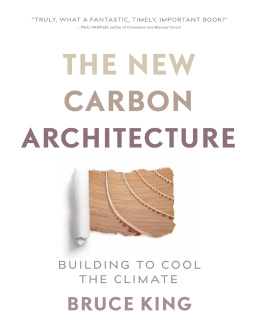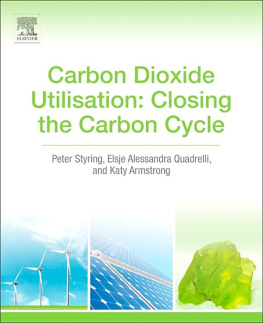This material is protected by copyright. Except as stated herein, none of the material may be copied, reproduced, distributed, republished, translated, downloaded, displayed, posted, or transmitted in any form or by any means, including, but not limited to, electronic, mechanical, photocopying, recording, or otherwise, without the prior written permission and approval of Columbia University Press. Permission is granted to the recipient of this email to display for personal, non-commercial use on a computer screen and to print one copy of individual pages on paper (but not to photocopy them) only, provided you do not modify the materials and that you retain all copyright and other proprietary notices contained in the materials. This permission terminates automatically if you breach any of these terms or conditions.
HOT CARBON
JOHN F. MARRA
HOT CARBON
Carbon-14 and a Revolution in Science
COLUMBIA UNIVERSITY PRESS NEW YORK
Columbia University Press
Publishers Since 1893
New York Chichester, West Sussex cup.columbia.edu
Copyright 2019 Columbia University Press All rights reserved
Library of Congress Cataloging-in-Publication Data {to come}
Columbia University Press books are printed on permanent and durable acid-free paper.
Printed in the United States of America Add cover/jacket credit information
CONTENTS
Preface vii
Acknowledgments xi
VI CONTENTS
Appendix 1. List of Nobel Prize Winners Mentioned 227 Appendix 2. The Periodic Table of Elements 229
Index 249
PREFACE
S
eldom has a single discovery in chemistry had such an impact on the thinking in so many fields of human endeavour. Seldom has a single discovery generated such wide public interest. So declared
the chair of the Nobel Committee, quoting one of the nominating scientists, in awarding the 1960 Nobel Prize in Chemistry to Willard Libby for his method of age determination using carbon-14. A year later, Melvin Calvin received the Nobel Prize in Chemistry for unraveling the path of carbon fixed in photosynthesis. The presentation speech for Calvins Nobel noted that photosynthesis is the absolute prerequisite for all life on earth and the most fundamental of all biochemical reactions, adding that the radioactive carbon isotope, 14 C, well-known also in other connections, has played a particularly important role.1
The stories surrounding the discovery and applications of carbon-14 in the second half of the twentieth century are the subject of this book. R. J. Gordon, in his Rise and Fall of American Growth: The U.S. Standard of Living Since the Civil War, notes that, except in the rural South, the daily life of every American changed beyond recognition between the end of the Civil War and the end of the Great Depression. By the end of World War II and the beginning of the so-called atomic age, the daily life of all Americans had changed profoundly. Carbon-14 is part of that sea change in outlook and life, and one of the most significant products of the atomic age.
Despite being so worthy of attention, however, the role of carbon-14 became submerged, except in scientific circles. Biological metabolic cycles, displayed on wall charts, never reference the isotope that allowed
VIII PREFACE
those transformations to be portrayed. The popular press refers to carbon dating or carbon dates without noting the long-lived radioisotope that makes fixing those dates possible. Much research in oceanography involves carbon-14, but this is not among the topics that inspire colorful documentaries on public television. I hope with this book to uncover some of the secrets involved in the history of carbon-14.
Stories of the impact of carbon-14 on daily life are told here quasichronologically, culminating in a continuing relationship with humanity and its advancement. I begin with the discovery of carbon-14 at the Berkeley Radiation Laboratory (chapters 1 and 2), then consider the discovery of radioactivity itself and how it is measured (chapter 3). Not long after the discovery of carbon-14 in the lab, it was found to be produced in the upper atmosphere, naturally and continuously. Chapter 4 describes how the natural occurrence of carbon-14 allows the dating of anything that accumulates carbon during its lifetime, tracing Willard Libbys early efforts to establish the method. Chapter 5 recounts the history of the study of photosynthesis, and chapter 6 tells how Melvin Calvin and his team, in the late 1940s, worked out how carbon dioxide, via photosynthesis, is assimilated into organic matter. Chapter 7 returns to the assessment of carbon-14 (covered initially in chapter 3)in particular, the inception of accelerator mass spectrometry (AMS), without which radiometric dating using carbon-14 would be next to useless. Chapter 8 then discusses various applications of carbon-14, using AMS, in dating archeological and other historical relics, the peopling of North America, and the age of human remains at archeological sites.
In chapters 9 and 10, I consider circulation in the deep ocean as it was worked out in the 1980s, the Earths carbon cycle, and how the carbon cycle affects Earths climate. Chapters 11 and 12 review the problem of ocean productivity. In chapter 11, I jump back to the late 1940s and early 1950s to reappraise the introduction of carbon-14 to biological oceanography. I cover the early debates (still continuing today) about the oceans productivity and what led to the project Plankton Rate Processes in Oligotrophic Oceans, the topic of chapter 12. That project, in the mid-1980s, resulted in a paradigm shift in the study of ocean productivityits magnitude and its importance to the Earths carbon cycle and ocean resources. I saved the study of carbon-14 and climate for chapter 13. Deciphering
PREFACE Ix
climate conditions since the last deglaciation, which is about the limit for the application of carbon-14, began in earnest in the late 1980s and spilled over to the twenty-first century. New data and ideas are rife at present, being generated almost monthly.
As long as carbon constitutes the stuff of life on planet Earth, carbon-14 will find application. Carbon is what were made of. Carbon is life. It is fundamental also to how we live, how we interact with the Earths spheres, how the Earth is habitablepretty much everything. And since the discovery of a long-lived radioisotope of carbon, we have an amazing tool to delve into almost every aspect of existence on Earthand perhaps the universe. Sir James Jeans, an early-twentieth-century physicist and astronomer, once said, Life exists in the universe only because the carbon atom possesses certain exceptional qualities.
What well find in this book is that carbon-14 is ubiquitous; it can be measured everywhere life occurs, or has left an imprint. Ubiquity is both a good and a bad thing, scientifically. Teasing apart the variables and drivers, we find that, in most cases, the uses of carbon-14 with the clearest results are those in which carbon-14 is added to a system in comparison with distributions that occur naturally. An exception is the use of carbon-14 in dating archeological artifacts, although here, too, corrections have to be applied, and these become a science in themselves.
For myself, I was part of perhaps the last generation of oceanographers who worked entirely as soft money scientists. Hard money meant being in a salaried position at a university or government lab. As soft-money scientists, we depended for our livelihood entirely on government grants or contracts. As one of my lab directors once said, we lived by our wits. We acted like small businesses, proposing our ideas to funding agencies (selling seems too strong a word), and indirectly to our peers. If successful, we implemented budgets, hired personnel (technicians, administrators), perhaps enlisted students and postdoctoral fellows. Eventually, in completing the research, we produced the producta scientific contribution, a scholarly work that advanced knowledge of (in my case) the ocean. Lamont-Doherty Earth Observatory, where I spent most of my career, had about 75 to 100 soft-money researchers at any one time; unlike in many academic departments, these researchers were young, with an average age of 35. Soft-money
Next page








